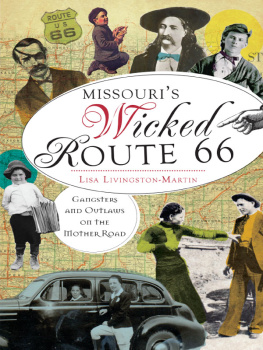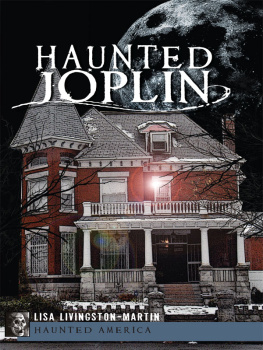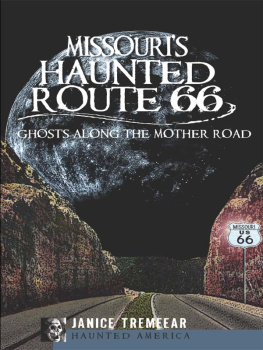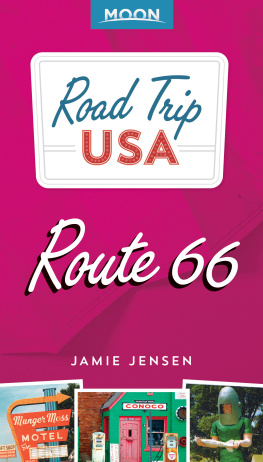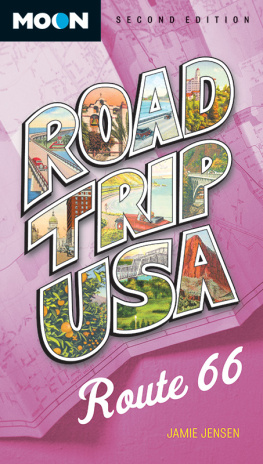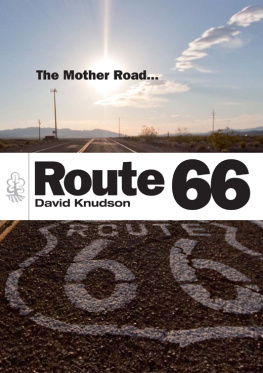
Published by The History Press
Charleston, SC 29403
www.historypress.net
Copyright 2013 by Lisa Livingston-Martin
All rights reserved
Front cover: George Shepherdfellow guerilla fighter, member of the James Gang and would-be assassin of Jesse James. Courtesy of the author.
First published 2013
e-book edition 2013
Manufactured in the United States
ISBN 978.1.61423.871.3
Library of Congress CIP data applied for.
print edition ISBN 978.1.60949.766.8
Notice: The information in this book is true and complete to the best of our knowledge. It is offered without guarantee on the part of the author or The History Press. The author and The History Press disclaim all liability in connection with the use of this book.
All rights reserved. No part of this book may be reproduced or transmitted in any form whatsoever without prior written permission from the publisher except in the case of brief quotations embodied in critical articles and reviews.
For the Paranormal Science Lab team members.
Contents
Acknowledgements
I have been blessed by the support of many people during this project. I thank my family, who has put up with the demands on my time. My experiences with Paranormal Science Lab (PSL) have also been a large inspiration for this book. Follow PSLs research at www.paranormalsciencelab.com. Thank you to all of the Paranormal Science Lab team members, whose efforts made much of this project possible.
Paranormal Science Lab Team Members: Jordyn Cole, Mistie Cole, Eric Crinnian, Kelly Still Harris, Bill Martin, Carla Martin and Lisa Livingston-Martin.
Thank you to those who have been supportive of Paranormal Science Lab and its efforts to bring attention to and promote preservation efforts for historic sites such as the Kendrick House, the Olivia Apartments, the Galena Murder Bordello and the Burlingame and Chaffee Opera House. Thank you to Victorian Carthage, owner of the nonprofit Kendrick House. Thank you to Keith and Rachel McBride, owners of the Burlingame and Chaffee Opera House, and Mark Williams, owner of the Olivia Apartments. Thank you to the Joplin, Missouri Public Library; the Post Memorial Art Museum; Joplin, Missouri; and the Webb City, Missouri Library. Thank you to Danya Walker, Mike Harris, John Hacker, Joe Hadsall, Rebecca Haines, Kevin McClintock, Nikki Patrick, Leslie Simpson, Josh Shackles, the Carthage Press, the Joplin Globe, the Pittsburg Morning Sun, Joplin Metro Magazine, Show Me the Ozarks magazine, the Joplin Fuse, KOAM TV, KODE TV, KSN TV and the Missouri Humanities Council for spreading the word. Thank you to all of those who have attended PSL activities, including the Haunted History Tours and live paranormal investigations at historic locations. We have made many new friends and enjoyed sharing history and the paranormal with the public.
I am indebted to the knowledge of many people in researching and writing this book. I want to thank Steve Cottrell, author and expert on history in southwest Missouri. I wish to extend a special thank-you to Janice Tremeear of Springfield, Missouri, and author of Missouris Haunted Route 66: Ghosts Along the Mother Road, Haunted Ozarks, and Wicked St. Louis for encouragement and for the introduction to my editor, Ben Gibson. Special thanks to Ben Gibson and everyone at The History Press for making this book possible.
Chapter 1
Route 66
Americas Road
Route 66 conjures some of the most nostalgic images of America: carefree adventure, vintage cars, roadside diners and kitsch motels. What opened in 1926 as Route 66 was built upon roads and trails that, in some places, had existed for centuries, evolving from Indian trails, settlers routes and military roads. Just as Route 66 did not spring into existence in 1926 from a vacuum, the comforting images it now inspires do not tell the whole story of Route 66. The dark, wicked history of Route 66 tells an intriguing story of an America we often overlook. Route 66 started its westward trek in Chicago, Illinois, and passed through eight states before ending at the Pacific Ocean in California. Today, many retrace those 2,400-some-odd miles of asphalt and concrete on personal quests of discovery. The wicked secrets of Route 66 take a little more effort to be explored.
Travelers werent alone on Route 66, and it didnt take long for the name to become associated with crime and violence. The 1920s exuded confidence and expansion of the economy. However, just three years after Route 66 opened, the Great Depression descended upon the nation, and the opportunities that had been so vibrant soon evaporated. These desperate times sent desperados upon Americas road in the form of gangsters such as Bonnie and Clyde, the Ma Barker Gang and Pretty Boy Floyd. Missouris section of Route 66 was familiar territory for Depression-era gangsters, but they werent the first outlaws to frequent this road, nor would they be the last.

Vintage postcard of the Bulger Motor Company in Carterville, Missouri, which opened on Route 66 in 1946 and is still in business, having survived the transition to the interstate highway system. Courtesy of the author.
By 1929, Missouri courts were forced to confront the issue of Route 66 being used to transport contraband. H.C. King was convicted of transporting moonshine. King lived along Route 66 in Crawford County in eastern Missouri. The sheriff raided Kings home unsuccessfully, but sixteen miles down Route 66, King and his wife were found eating lunch at the Dew Drop Inn in Bourbon, Missouri. In the car were five one-gallon jugs of moonshine and a case of empty pint jars. The trial court, in convicting King, cited the statute that made transporting moonshine, hooch or corn whiskey a felony. King appealed the conviction, relying on the testimony of a waiter at the Dew Drop Inn who stated that he had seen another car park beside Kings car after King and his wife entered the diner. The waiter stated the driver was monkeying between the two cars, although he did not see the man put anything in Kings car. The Missouri Supreme Court noted that the five gallons of whisky in bulk along with the case of empty pint bottles showed preparations for some retailing operation. Nonetheless, in 1932, the court reversed the conviction, holding that there was not enough evidence to prove that King put the moonshine in his car or that he even knew it was there.
Although the form of contraband changed over the years, by 1994, Missouri courts routinely acknowledged it as a common practice when upholding convictions for transporting illegal drugs. In the case of the State v. Joyce in 1994, the court noted:

Vintage postcard featuring the Chain of Rocks Bridge over the Mississippi, where Route 66 enters the state of Missouri in St. Louis. Tailfins are a symbol of the heyday of Route 66. Courtesy of the author.
Route 66 of legend and song no longer traverses Missouri. Now we have Interstate 44 [which follows much of the original Route 66], on whose broad divided lanes thousands of vehicles cruise daily. Some of those vehicles transport controlled substances of various kinds, even to the point that courts may take judicial notice that this route is often used by traffickers.
However, transporting contraband is far from the only less-than-reputable activity that has occurred along this famous route. As we explore the darker side of Route 66, we find that it does not tarnish the legend of Americas Road but gives it facets little recounted. From Jesse James, Wild Bill Hickok and Belle Starr to Jack the Ripper and a mad scientist, Missouris Route 66 has a wicked side that makes the legend even more fascinating.
Next page
